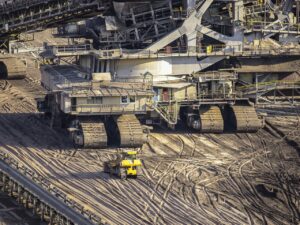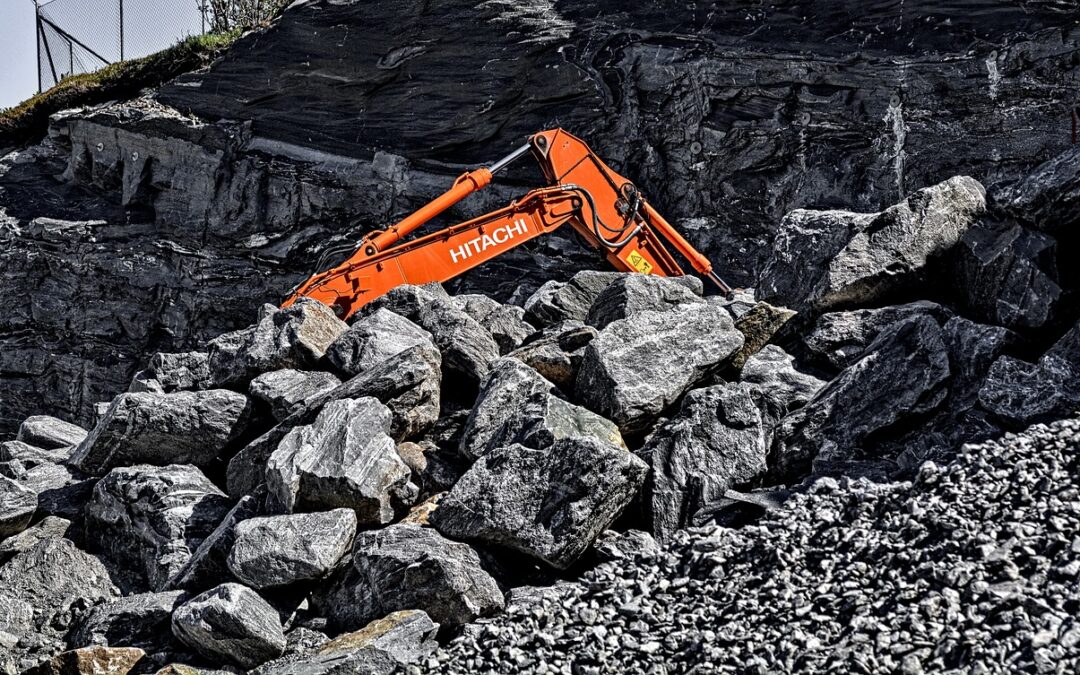Mining is an essential industry that provides raw materials for countless products we use in our daily lives. Surface mining is a popular method used to extract minerals that are close to the Earth’s surface. In this article, we will explore the process of surface mining, focusing on five key techniques: strip mining, open-pit mining, mountaintop removal, dredging, and highwall mining. By understanding how each of these methods works, we can gain insight into the role of surface mining in resource extraction.
Process of Strip Mining
Strip mining is a surface mining method that removes large strips of soil and rock to reach buried mineral deposits.
Miners most often use strip mining to extract coal, but it also works for resources like phosphates and oil sands.
The process starts by clearing vegetation and removing the topsoil from the mining site. Once cleared, miners use heavy machinery—such as draglines, shovels, and bulldozers—to remove layers of earth. They collect the exposed minerals after each layer is stripped. Miners often place the removed overburden in nearby areas or old mining pits.
Process of Open-pit Mining
Similar to strip mining, open-pit mining involves removing layers of earth to access minerals. However, the key difference lies in the shape and depth of the excavation. While strip mining creates long, shallow trenches, open-pit mining involves digging a large, open pit from which minerals are extracted.
The process of open-pit mining starts by creating a series of benches or steps that allow miners to safely descend into the pit while extracting materials. The minerals are hauled from the pit using trucks or conveyors, while the waste rock is typically deposited in nearby waste piles. This method is commonly used for mining ores such as copper, gold, iron, and diamonds. The large, open pits created by this technique are often left behind once mining operations have ceased, leading to long-term environmental concerns.
Process of Mountaintop Removal Mining
Mountaintop removal mining is a surface mining method mainly used in the Appalachian region of the United States.
Miners remove entire mountain summits to reach coal and other mineral seams beneath the surface. They use explosives to blast away the top of the mountain, quickly exposing large amounts of minerals. The process begins by clearing vegetation from the mountain’s summit. Next, crews use explosives to break up the overburden and uncover the mineral deposits.
Heavy machines like draglines then remove the exposed minerals from the site. Though efficient, this method causes major environmental harm, including deforestation, habitat loss, and polluted water sources.
Process of Dredging
Dredging is a surface mining method used to extract minerals from underwater deposits in rivers, lakes, or oceans.
The process resembles gold panning, as miners remove sediment to find valuable materials. Specialized equipment, such as dredges, scoops or suctions sediment from the bottom of a water body. Miners then process the sediment to separate valuable minerals from unwanted material. Dredging often targets resources like sand, gravel, gold, and diamonds. Although effective, this method can disturb aquatic life and displace sediment within water ecosystems.
Process of Highwall Mining
Highwall mining is a surface mining method that extracts minerals from exposed rock walls left by earlier mining operations.
Miners use this technique when surface mining becomes too deep but valuable minerals remain in the seam. A remotely operated continuous miner cuts into the highwall and extracts minerals directly from the seam. This remote operation improves miner safety compared to traditional underground mining methods. Highwall mining often recovers coal and other minerals without disturbing the surface above. Despite its benefits, this method can still cause erosion and weaken nearby rock structures, posing environmental and safety risks.

A Comprehensive Look at the Processes of Surface Mining
The various processes of surface mining each have their unique advantages and disadvantages. While techniques like strip mining and open-pit mining are well-suited for large-scale extraction, methods like dredging and highwall mining are more specialized for particular types of deposits. Mountaintop removal mining, though highly effective, remains controversial due to its environmental toll.
No matter the method, all surface mining processes share a common goal: to access valuable resources with the least amount of disruption to the surrounding environment. However, striking this balance is often easier said than done. While surface mining is crucial for industries such as energy, construction, and technology, it comes with significant challenges, including land degradation, habitat loss, and pollution.
As industries strive to meet the growing demand for minerals, mining companies are also looking for ways to minimize the negative environmental impact of these methods. With ongoing advancements in mining technology and a stronger focus on reclamation, there is hope that surface mining can become more sustainable in the future.
As we continue to rely on the benefits that surface mining provides, it is essential to remain mindful of its environmental and social costs. By improving mining practices and focusing on sustainability, we can ensure that surface mining remains a valuable yet responsible method of resource extraction.

